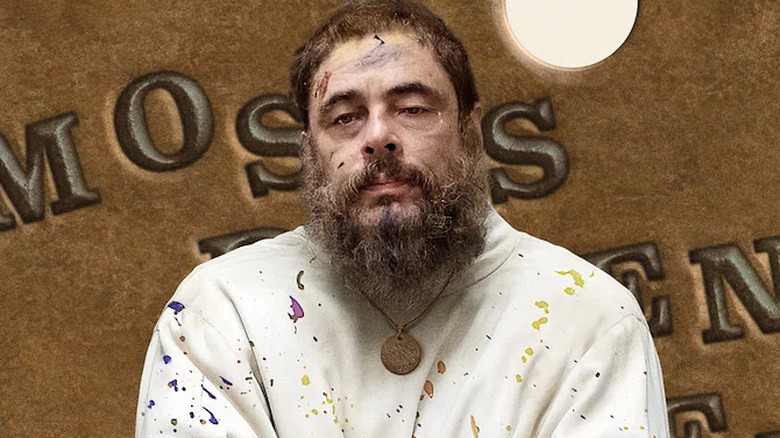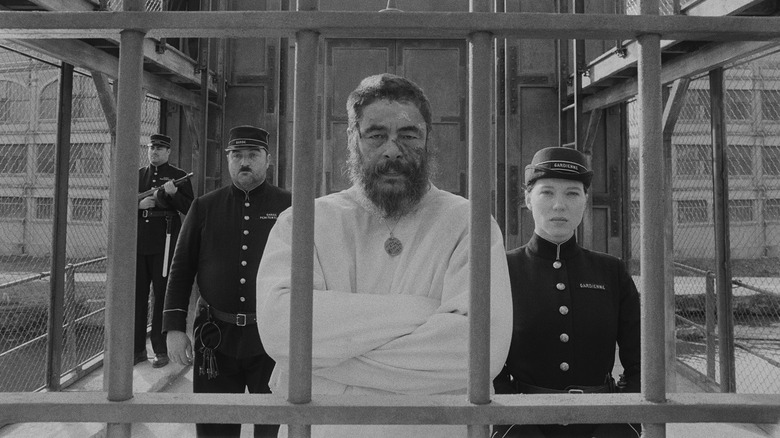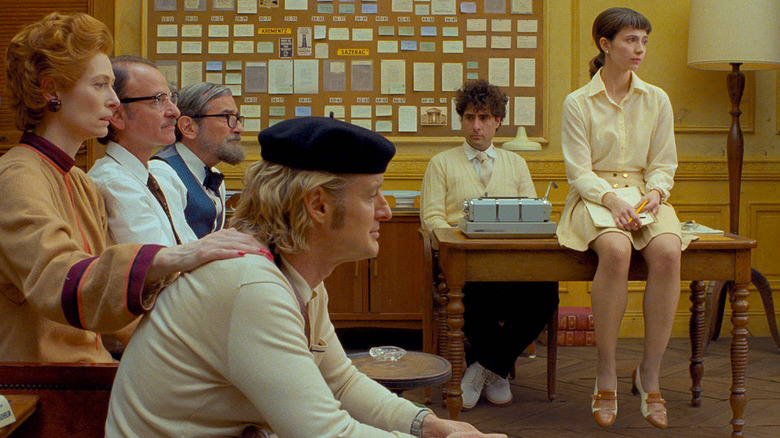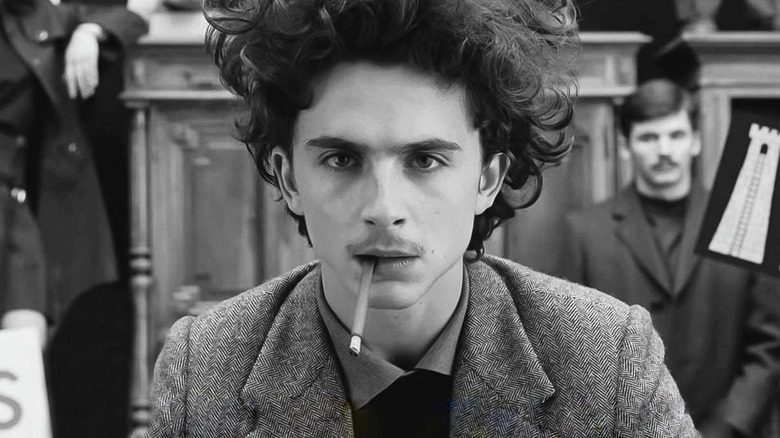The French Dispatch Editor Andrew Weisblum On Crafting Wes Anderson's Films [Interview]
Andrew Weisblum has been editing Wes Anderson's films for over a decade. The two first collaborated on "The Darjeeling Limited," and since then they've worked together on "Fantastic Mr. Fox," "Moonrise Kingdom," "Isle of Dogs," and now "The French Dispatch."
Anderson's latest is structured into three chapters and based around three stories appearing in the final issue of The French Dispatch, the fictional foreign bureau of a Kansas newspaper. In addition to this framing device, there are an array of characters and moving pieces that Weisblum helped to assemble without any bumps in the road.
For both the director and editor, there are no rules to their process. Whatever plays best it is. As well-regarded as Anderson is for his specificity, there's a bit of freewheeling to his process — as Weisblum recently explained to us in an interview.
'We were just figuring it out as we went along.'
You and Wes Anderson don't have a rulebook, so what sort of experimenting did you want to do with "The French Dispatch"?
One of the things I think that's pretty bold and obvious about the movie is that the stark choices between what's black and white and what's color and what's happening visually, graphically, the different aspect ratios and formats that he chose. A lot of people have asked me if there was a theoretical behind that or an approach that was articulated in terms of rules of where things were black and white in color. There really wasn't. It was mostly looking for vibe and dynamics and what we thought would work best in different formats and what would give us the most dynamic contrast from moment to moment and punctuate certain things, and playing around with smaller frames against larger frames and mimicking certain ideas of the layout of a magazine, but in film form. There wasn't a rule book for it. We were just figuring it out as we went along.
So just having fun?
Basically, yeah. Exactly. There was room to play and experiment and do certain random things that if we just liked it, sometimes there wasn't even a reason for it. You just did.
How about the translation subtitles?
All the translation subtitles, all that stuff was mostly just by being bored with trying to figure out how to lay it out on the bottom and make people read it. It's just playing with that more for fun as a graphic element instead of exposition element and almost not even caring what it is that you're meant to read, but more the jazz of it all and make it visually exciting instead of informational. That was one thing we played around with early on and found new ways to lay it out. But there's one speech that Lea has in the jail set, in the electrocution room that we totally riffed that one day just for fun. I just tried it up top and then moved it around, and then Wes started playing around with the order of the lines and that was just us playing with it.
What is unique about finding the pace and rhythm of his movies?
I think that this is an interesting one because it's got these different stories that are their own films. They're still very much Wes' signature, but they have their own feelings to them and their own rhythms to them. It's finding the ways to make them find their own music and punctuation where the pauses are, where the pauses are completely removed and playing around with tiny, minuscule adjustments to timing in a joke or inside a frame or in between shots. That's how we attack it. Sometimes it's just like a little two-frame adjustment in it. Suddenly, the scene works the course.
Obviously, a major part of your job is crafting the performances. Some editors say there's always a moment or two that defines how they see a performance and cut it together. Was that ever your experience?
It's interesting because that's different, again, depending on the story and of course, the actor. Let's say, the Rosenthaler story, we had an animatic and the actors had seen it, a lot of the stuff was influenced by that. But then of course, Jeffrey Wright's stuff has all the music to it. So, it's just finding the clearest and strongest performances not just in the visual take, but every line and collaging them together. But then, there are also ones that are more freeform, like the stuff with Timothée [Chalamet]and Fran[ces Dormand]. I don't want to say it's improvised, but it was less dictated by storyboards or animatic and more freeform in how it was shot. We had to find those a little bit more as an exploration process.
'It's not quite John Woo.'
What work went into editing the animated sequence?
Well, that stems from an animatic process, which much of the rest of the film goes through even live-action stuff. But we worked with an animator who we had worked with on the 2D material on "Isle of Dogs," which was most of the stuff on the television in "Isle of Dogs," which this guy Gwenn [Germain] had done. Since he was French and since it made a lot of sense, he was the one who came to the front and our producer, Octavia [Peissel], worked with him to do that sequence.
I was involved a little bit in the discussion of the influences, but obviously, a big influence in that was French comics. We also worked for a while to figure out what the palette and aesthetic for that stuff was. Because in a lot of instances, it was one of the only times you get to see those characters suddenly in color in this new format and how they should read what level of saturation it was, which things had color, which things didn't. That stemmed from all the other choices we were making around it, which is just a lot of fun.
It's funny, Wes Anderson is probably one of the better action directors.
I think he would love that. I remember once we worked on an action sequence on one of the earlier films. We both felt it was lacking a certain technical proficiency even if it looked good. I remember he remarked, "Well, it's not quite John Woo," which I've always taken to heart, but it's not trying to be John Woo either [Laughs].
One thing that's interesting about Wes is his understanding of blocking in a scene and understanding of using the camera as an element of blocking and not just his coverage. I think sometimes that shows most succinctly in scenes that are not dialogue and action, because he uses the camera as almost a blocking element or a geographical element, so that you understand where you're meant to focus. That's one of his strengths.
Does he do much coverage or even pick-up shots?
No. We'll do things where we have an elaborately blocked master like I just described, but then we'll realize maybe we need a closeup here or something, and we figure out a pick-up that might integrate with that. But it's not usually a traditionally-covered thing with a static master or set of masters and then closeups and overs. That's not often the language that we're dealing with. There are occasional exceptions, but for the most part, it's much more plotted out than that.
What about striking the tone in the editing room?
I think Wes comes in often with, in his head, what he expects to see and hear, and he strives to get that. But often, he's working with these talented actors who will bring some spark of life or spontaneity to something that we often find ourselves building the scene around rather than following the roadmap. It's a simple little reaction that Timothée gave or Benicio [del Toro] gave. It's hard to pinpoint an exact example, but quite often, those become the linchpins in the scene even though there's a clear roadmap of what he prefers as a reading or what he's going for.
'It was hard to make Mr. Fox smile.'
Do you two ever end up with many deleted scenes?
There's one scene or a section that we cut out of "Darjeeling" with Waris and Amara, but often, we do not have deleted scenes. The only film where I'd say that was not the case was on "The Fantastic Mr. Fox," where we did a lot of reworking of story and exposition during the process. There was a narrator character that was in and then was out. There were different ways of attacking the story of Boggis, Bunce, and Bean going after the animals underground and what that whole section of the film was not just narratively, but also what was fun to show.
That went through a whole process that was radically different from the script in the end. But that's a part of us feeling our way through what animation is, I guess, and the opportunities it affords when you suddenly have a shot come into your storyboard and you realize the shot before it needs to be different than what you thought and how you keep modifying that. That just expands into these crazy, little tangents where you reconceive scenes sometimes almost completely.
How did your "Isle of Dogs" experience compare to that?
That was a lot more decisive. I think we had a much closer handle on what to expect from that process and what our limitations were with puppets and what our opportunities were with puppets and how to attack those. There were many less surprises. I don't think Wes and I, when we did "Mr. Fox," we didn't really understand how scales work in a stop-motion film where you have different sizes of puppets and how you have to figure out how to transition to them from one to the other inside a shot versus a cut, the best way to do that, certain expressions that you can or can't do with a puppet and knowing that you need them beforehand to build them. All those kinds of things that we didn't know until we were there.
What expressions can you and can you not do?
It was hard to make Mr. Fox smile. We didn't know that until we started doing it. Then they had to build a sculpt for the mouth and it became a joke how to pop the smile on a cut instead of actually doing it in some photorealistic way, which is usually not interesting.
For scale and knowing how to cut and to show that, how do you do that?
It depends on how big the puppets are in relation to each other. Wes ended up designing a lot of shots in "Mr. Fox" where a large scale puppet would pass behind an object or something and suddenly become a different scale puppet, because they move further away from the camera or maybe there's a scene to a different set or something like that. It's a way to have to hide cuts or whips or different camera moves to change things or cut somewhere in a shot and have a character move closer or away to the camera.
"The French Dispatch" is now in theaters.



